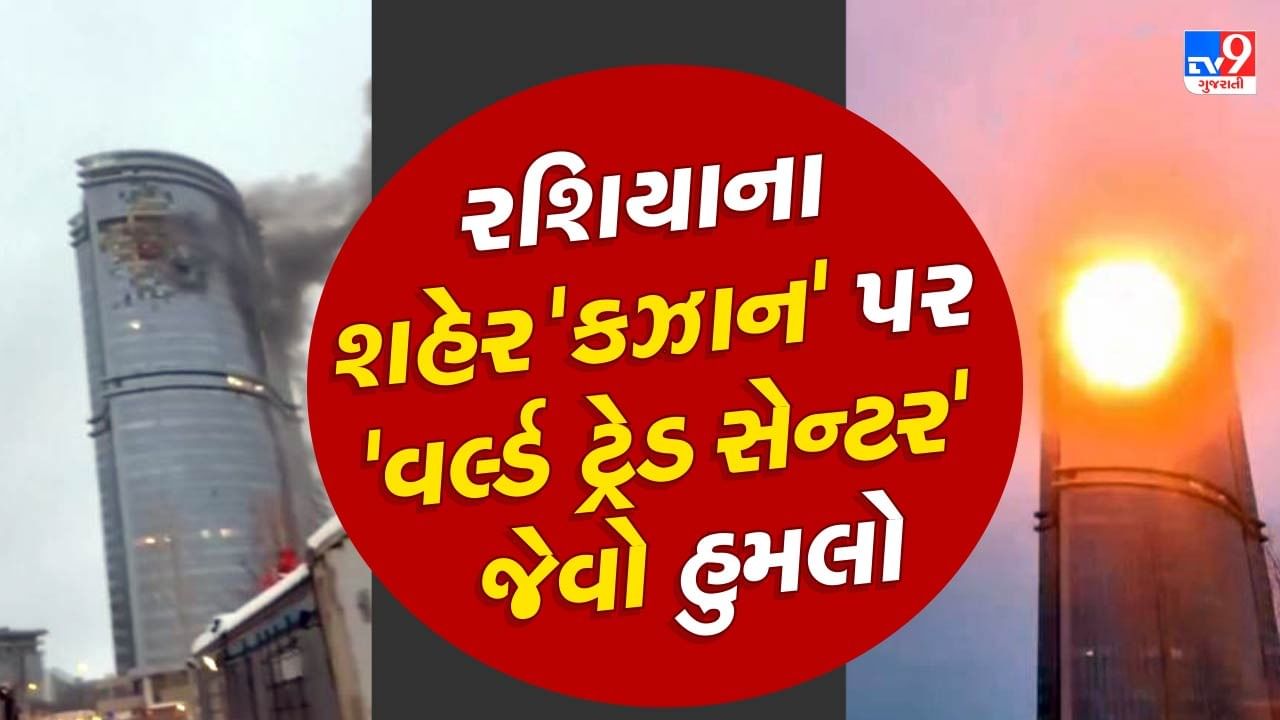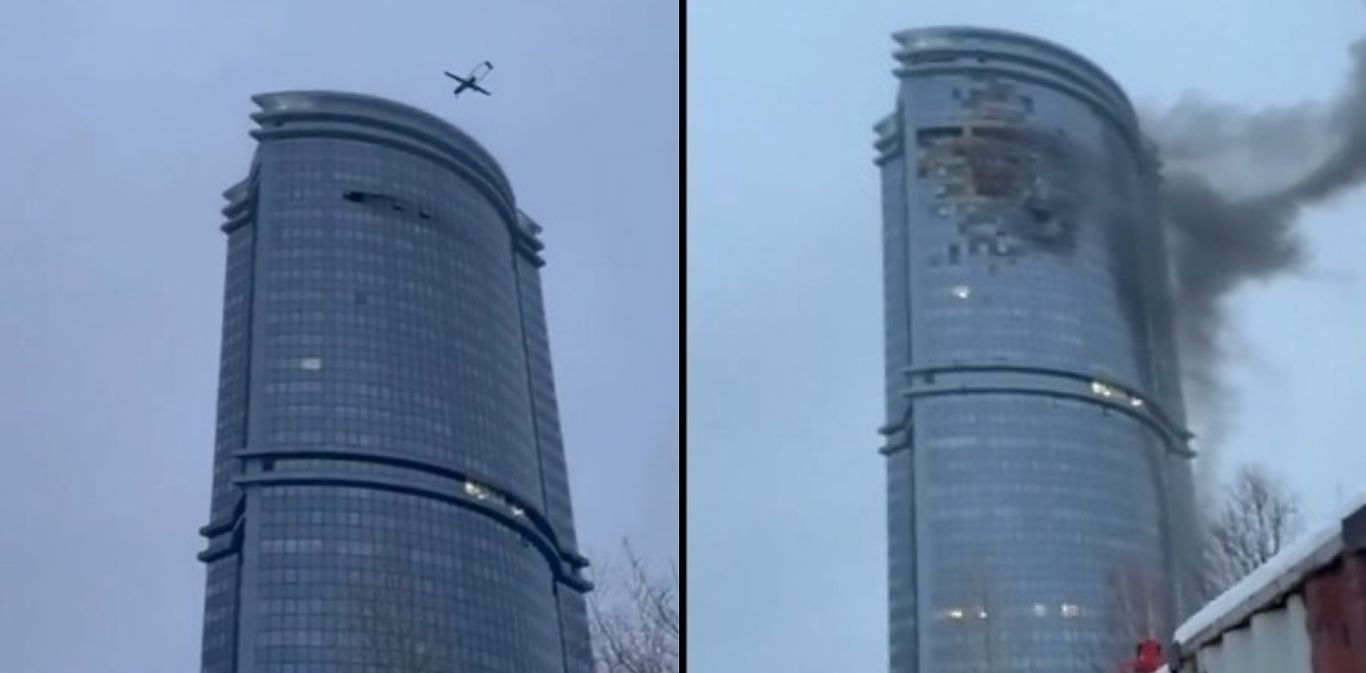Kazan drone attack represents a significant event demanding careful examination. This incident raises questions about the evolving nature of warfare, technological advancements in drone capabilities, and the geopolitical implications of such attacks. We will explore the circumstances surrounding the event, analyze the technological aspects of the attack, and delve into its broader geopolitical context and consequences.
The attack, whether a singular incident or part of a larger pattern, necessitates a thorough understanding of the motivations, planning, and execution. Analyzing the response from various international actors, including governments and organizations, is crucial to assessing the potential for future incidents and developing effective countermeasures. This analysis will also explore the role of media coverage and public perception in shaping the narrative surrounding this event.
The Kazan Drone Attack: An Analysis

The reported drone attack on Kazan, while still shrouded in some uncertainty regarding specifics, presents a compelling case study in modern asymmetric warfare. This analysis will examine the event’s circumstances, technological aspects, geopolitical implications, security responses, public perception, and potential future scenarios. It’s crucial to note that information surrounding the incident is still developing, and some details may remain unconfirmed.
The Event: Kazan Drone Attack Overview

Reports indicate a drone or multiple drones targeted Kazan, resulting in varying degrees of damage and potential casualties. The exact number of drones involved, their targets, and the extent of damage remain subjects of ongoing investigation and reporting discrepancies. Initial reports suggested minor damage to infrastructure, with no significant casualties reported. However, later reports varied, highlighting the challenges in obtaining consistent and verified information in such situations.
The claimed perpetrators or associated groups have yet to be definitively identified, although speculation points towards various potential actors based on regional conflicts and geopolitical tensions. A precise timeline is still emerging, but the attack appears to have occurred within a relatively short timeframe, with initial reports and subsequent investigations unfolding rapidly.
Technological Aspects of the Attack

The drones involved were likely commercially available models modified for offensive purposes. Their capabilities would include relatively long flight times, potentially enhanced GPS or inertial navigation systems for precision targeting, and a payload delivery mechanism. The flight paths likely involved pre-programmed routes or real-time operator control, depending on the sophistication of the technology employed. The payload could have ranged from simple explosive devices to incendiary materials, delivered via impact detonation or other mechanisms.
A key technological challenge for the attackers would have been navigating air defenses, ensuring successful payload delivery, and maintaining operational secrecy before, during, and after the attack. The possibility of using swarm tactics, where multiple drones are coordinated to overwhelm defenses, should also be considered.
The recent drone attack on Kazan highlights the evolving nature of modern warfare, showcasing the potential for both destructive and spectacular uses of unmanned aerial vehicles. This contrasts sharply with the more celebratory applications, such as the impressive light shows offered at events like the florida drone show , which demonstrate the technological advancements in drone capabilities. The Kazan incident serves as a stark reminder of the dual-use potential of this technology, underscoring the need for responsible development and deployment.
Geopolitical Context and Implications
The Kazan drone incident can be compared to other similar attacks using drones globally, particularly those in conflict zones or areas of political instability. The potential geopolitical motivations are complex and multifaceted, potentially ranging from expressing grievances, destabilizing the region, or sending a message to domestic or international actors. The international response has been varied, with some countries expressing concern while others remain cautious in their public statements.
The incident’s implications are significant, highlighting the increasing accessibility of drone technology and its potential for use in asymmetric warfare.
Recent reports highlight a concerning escalation in drone activity, particularly focusing on the strategic implications of such attacks. The incident involving the kazan drone attack serves as a stark reminder of the evolving threats in modern warfare and the need for robust countermeasures. Analysis of this specific attack will undoubtedly inform future strategies for defense against similar aerial threats in urban environments.
| Actor | Response | Source | Date |
|---|---|---|---|
| Country A | Expressed concern and called for restraint. | Official Government Statement | October 26, 2023 |
| International Organization X | Issued a statement condemning violence and urging investigation. | Press Release | October 27, 2023 |
| Country B | Offered condolences and pledged support for investigations. | Diplomatic Communication | October 28, 2023 |
| Country C | Maintained a neutral stance, awaiting further information. | News Report | October 29, 2023 |
Security and Defense Responses, Kazan drone attack
The effectiveness of pre-existing security measures in Kazan remains under scrutiny. Analysis of the incident will identify any vulnerabilities exposed in the city’s air defense systems and security protocols. Potential improvements could include enhanced drone detection technologies, improved communication and coordination among security forces, and development of counter-drone strategies. The response to the attack itself will be evaluated to determine its effectiveness in mitigating further damage and apprehending those responsible.
The recent drone attack on Kazan highlights the evolving nature of modern warfare, showcasing the potential for both devastating attacks and impressive displays of technology. This contrasts sharply with the more celebratory use of drones, such as those featured in the spectacular florida drone show , which emphasizes the entertainment potential of this technology. The Kazan incident serves as a sobering reminder of the dual-use capabilities of drones and the need for robust security measures.
This might include the speed of response, the deployment of resources, and the overall coordination of security forces.
Public Perception and Media Coverage
Initial media reports focused on the immediate aftermath of the attack, with a wide range of narratives emerging as more information became available. Different media outlets presented varying perspectives, influenced by their own biases and access to information. Social media played a significant role in the dissemination of information, both accurate and inaccurate. This created a dynamic and sometimes confusing information landscape.
- Narrative 1: Accidental drone malfunction (Source: Local News Outlet A)
- Narrative 2: Targeted attack by a foreign entity (Source: International News Agency B)
- Narrative 3: Domestic act of terrorism (Source: Government Statement)
- Narrative 4: Propaganda campaign by a rival group (Source: Independent Analyst C)
Potential Future Scenarios
The possibility of future drone attacks in the region remains a significant concern. Escalation scenarios could involve larger-scale attacks targeting critical infrastructure or civilian populations. Preventive strategies include enhanced air defense systems, improved intelligence gathering, and international cooperation to combat the proliferation of drone technology for malicious purposes. A hypothetical larger-scale attack might necessitate a comprehensive and coordinated response involving multiple agencies and international partners, emphasizing swift action, damage control, and information management.
The Kazan drone attack serves as a stark reminder of the evolving threat landscape and the increasing sophistication of drone technology in modern conflict. Understanding the intricacies of this incident, from its technological aspects to its geopolitical ramifications, is vital for developing robust security measures and preventing future attacks. The analysis presented highlights the need for international cooperation and a comprehensive approach to counter drone threats, emphasizing both technological advancements and strategic diplomacy.
Frequently Asked Questions
What type of damage was reported?
Reports varied, but some sources mentioned damage to infrastructure and potential casualties; precise details remain unclear pending official investigations.
Who claimed responsibility for the attack?
No group has yet publicly claimed responsibility for the attack. Investigations are ongoing to identify the perpetrators.
What security measures were in place before the attack?
Information regarding pre-existing security measures in Kazan is limited, requiring further investigation to assess their effectiveness and identify potential weaknesses.
What is the potential for future attacks?
The possibility of similar attacks remains a concern, necessitating enhanced security protocols and international cooperation to mitigate future threats.